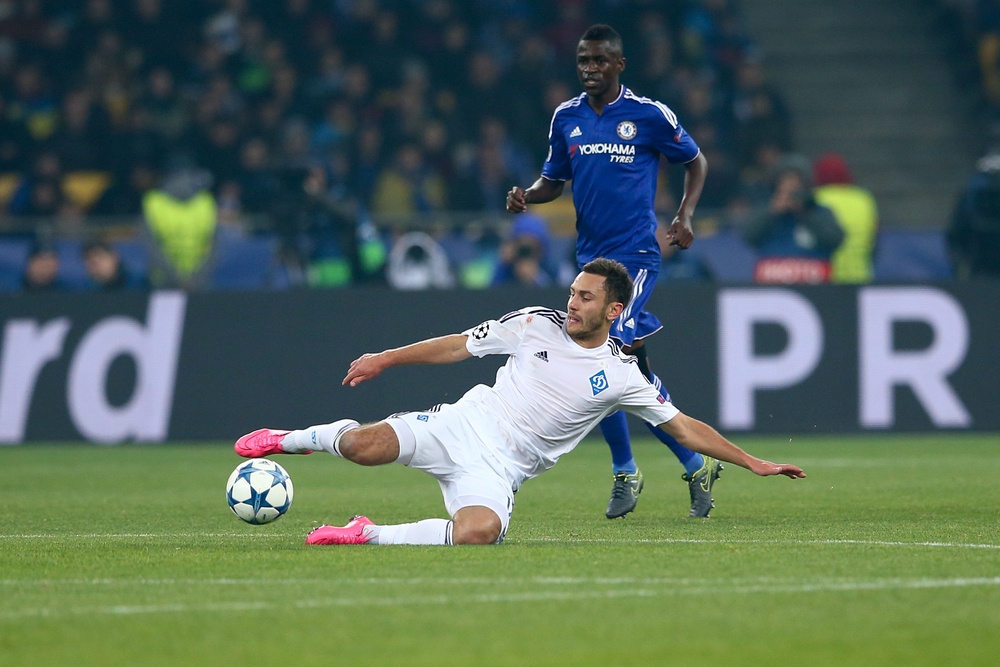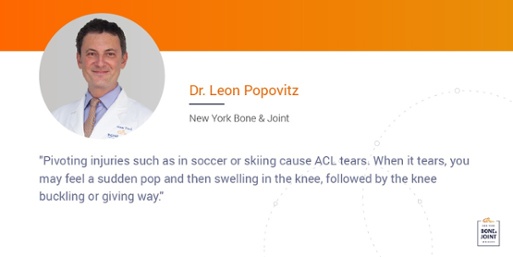As the World Cup draws closer, it’s easy to understand what makes soccer the world’s most popular sport. With its fast pace, simple rules, and pick-up game readiness (all you need is a ball!), it’s an accessible and thrilling pastime for millions around the world.
Like any sport, however, soccer has its fair share of injuries. One of the most common — and most devastating — is an ACL tear, a rupture of an essential ligament in the knee. As soccer enthusiasts across the country prepare for the sport’s premier tournament, we asked our own Dr. Leon Popovitz to walk us through the most common causes of this injury and how players can better protect their knees.
CAUSES OF ACL TEARS
When most people imagine soccer injuries, they might envision sudden collisions and rough slide tackles. 70% of all ACL injuries, however, occur without any contact at all. In most cases, they’re simply caused by sudden shifts of direction or force or an awkward landing, both of which are regular occurrences in soccer.
Age and gender can also leave players predisposed towards ACL tears. The risk of a tear gradually increases as athletes age, while female soccer players are two to three times more likely to suffer an ACL injury than their male counterparts.
SYMPTOMS OF ACL TEARS
Symptoms of ACL tears can vary slightly depending on the extent of the tear, but they usually result in pain, swelling, a limited range of motion, and an inability to place weight on the leg. In some cases, they’re accompanied by a sudden popping sound at the moment of the injury and an immediate buckling of the knee. In other cases, however, the patient may be able to continue walking with some difficulty.
TREATMENT FOR ACL TEARS
Considerable strides have been made in the realm of ACL treatment in recent years, helping most athletes return to their peak condition without lasting complications. In general, ACL tears are repaired with a combination of arthroscopic reconstruction and physical therapy. Recovery timelines vary based on the severity of the damage, but most athletes can expect to resume normal activities after six to nine months of rehabilitation.
PREVENTING ACL TEARS
As with any orthopedic injury, the best way to avoid an ACL tear is to practice some preventative measures that reduce your risk. For example, neuromuscular training in women has proven effective in preventing ACL injuries, as has jump training that focuses on increasing flexion upon landing. Strengthening the hamstrings and decreasing dominance of the quadriceps muscles has also been shown to significantly decrease the likelihood of an ACL injury.
Ready to address a recent injury or simply learn more about preventing ACL tears in the future? Our team at New York Bone & Joint Specialists has years of experience in treating ACL tears, whether they occur on or off the soccer field. From the initial diagnosis to the final follow-up, we can provide a comprehensive treatment plan to hasten your recovery and ensure that you return to action as soon as possible. Call today to schedule a consultation!





